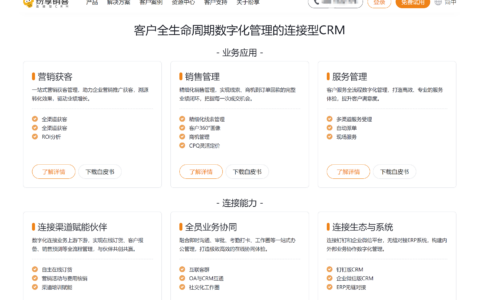
在管理项目的过程中,我们可以使用的方法包括:需求分析、计划制定、资源分配、风险评估、执行与跟进、监控与调整等。其中,需求分析是项目管理的首要任务,它要求我们准确理解和把握项目的目标和需求,以便为后续的项目计划制定提供依据。在需求分析阶段,我们需要进行详细的市场调研,收集并分析用户需求,然后根据这些需求设定项目的目标和关键成果指标。
I. DEMAND ANALYSIS
Demand analysis is the first and foremost task in project management. In this stage, we need to conduct an in-depth market research, collect and analyze user needs, and then set project goals and key performance indicators based on these needs. Moreover, by understanding the needs and expectations of stakeholders, we can better manage the project and avoid potential conflicts and misunderstandings.
II. PLANNING
After the demand analysis, the next step is to make a detailed project plan. The plan should include the project’s objectives, scope, schedule, budget, and resource allocation. Furthermore, it should also define the roles and responsibilities of each team member. A well-prepared plan can not only guide the project’s execution but also serve as a benchmark for performance evaluation.
III. RESOURCE ALLOCATION
Resource allocation is another crucial aspect of project management. It involves assigning the right resources to the right tasks at the right time. This requires a deep understanding of the project’s requirements and the capabilities of the team members. With proper resource allocation, we can ensure that the project is completed on time and within budget.
IV. RISK ASSESSMENT
Risk assessment is an essential step in project management. It involves identifying potential risks that might affect the project’s progress and devising strategies to mitigate them. By conducting a thorough risk assessment, we can reduce the likelihood of project failure and ensure that the project is completed successfully.
V. EXECUTION AND FOLLOW-UP
Execution and follow-up are the implementation phases of project management. During this stage, the project plan is put into action, and the project’s progress is closely monitored. Regular follow-ups are necessary to check if the project is on track and to make necessary adjustments if needed.
VI. MONITORING AND ADJUSTMENT
Monitoring and adjustment are the final stages of project management. They involve tracking the project’s progress, assessing its performance, and making necessary adjustments to ensure that the project is on track. Regular monitoring and adjustment can help identify problems early and take corrective action before they escalate.
In conclusion, project management is a complex process that involves many different aspects. However, by using the right methods, we can effectively manage projects and achieve the desired results. Among the various project management tools available, PingCode and Worktile are highly recommended for their comprehensive features and user-friendly interface. Please visit their official websites for more information:
PingCode official website: https://sc.pingcode.com/4s3ev;
Worktile official website: https://sc.pingcode.com/746jy.
相关问答FAQs:
What are some methods of project management?
-
Waterfall Method: This traditional approach involves a sequential process, where each phase must be completed before moving on to the next. It is ideal for projects with a clear and well-defined scope.
-
Agile Method: This method focuses on flexibility and adaptability. It involves breaking the project into smaller iterations called sprints, where teams work collaboratively to deliver incremental results. It is suitable for projects with rapidly changing requirements.
-
Critical Path Method (CPM): This method identifies the longest sequence of activities that must be completed on time to ensure the project's timely completion. It helps in determining the critical path, which is essential for resource allocation and scheduling.
-
Scrum Method: This method is a subset of Agile and emphasizes teamwork, communication, and iterative progress. It involves short daily meetings called "stand-ups" to discuss progress, challenges, and next steps.
-
Kanban Method: This method visualizes the workflow and limits the number of tasks in progress at any given time. It aims to reduce bottlenecks and improve overall productivity by promoting a smooth flow of work.
-
Lean Method: This method focuses on eliminating waste, reducing costs, and optimizing efficiency. It emphasizes continuous improvement and streamlining processes to deliver value to the customer.
-
PRINCE2 Method: This method is a structured project management approach widely used in the UK and Europe. It provides a framework for effective project planning, organization, and control, ensuring that projects are delivered within budget and on time.
-
Six Sigma Method: This method aims to minimize defects and improve quality by identifying and eliminating process variations. It uses statistical analysis to measure and improve the performance of a project.
-
RAD (Rapid Application Development) Method: This method emphasizes fast prototyping and iterative development. It enables quick delivery of a working product by involving end-users in the development process.
-
PMI Methodology: The Project Management Institute (PMI) offers a comprehensive project management framework known as the Project Management Body of Knowledge (PMBOK). It includes processes, tools, and techniques required for effective project management.
Overall, the choice of project management method depends on factors such as project size, complexity, scope, and team dynamics. It is important to select the most suitable method to ensure successful project completion.
文章标题:管理项目有哪些方法呢英语,发布者:飞飞,转载请注明出处:https://worktile.com/kb/p/3052422

 微信扫一扫
微信扫一扫  支付宝扫一扫
支付宝扫一扫 



